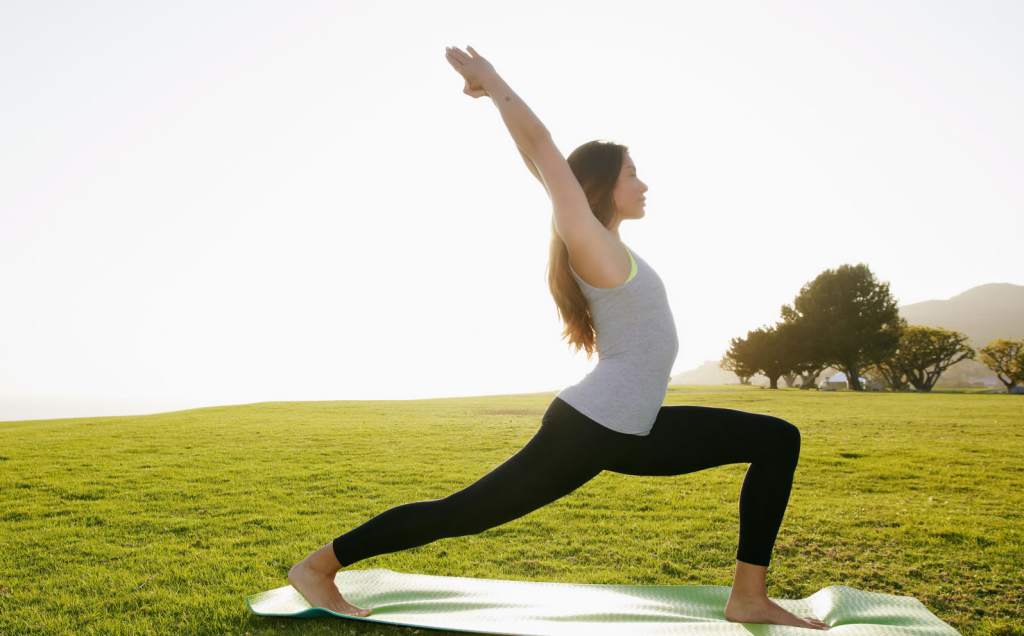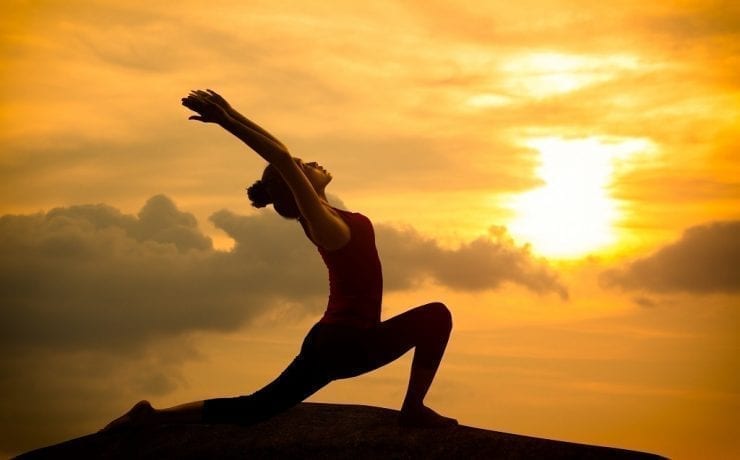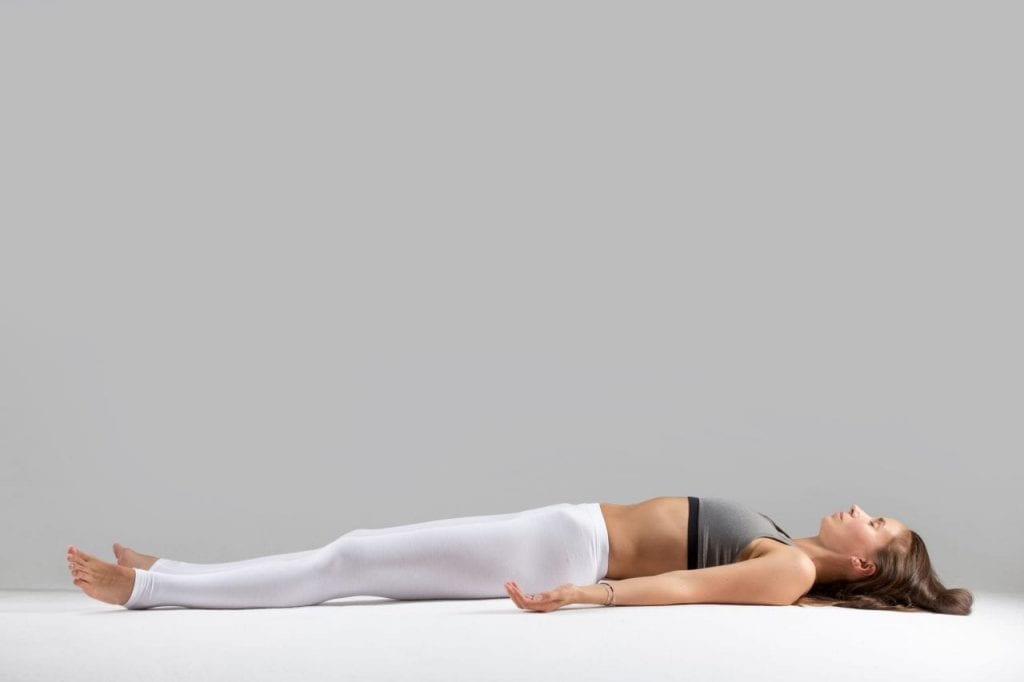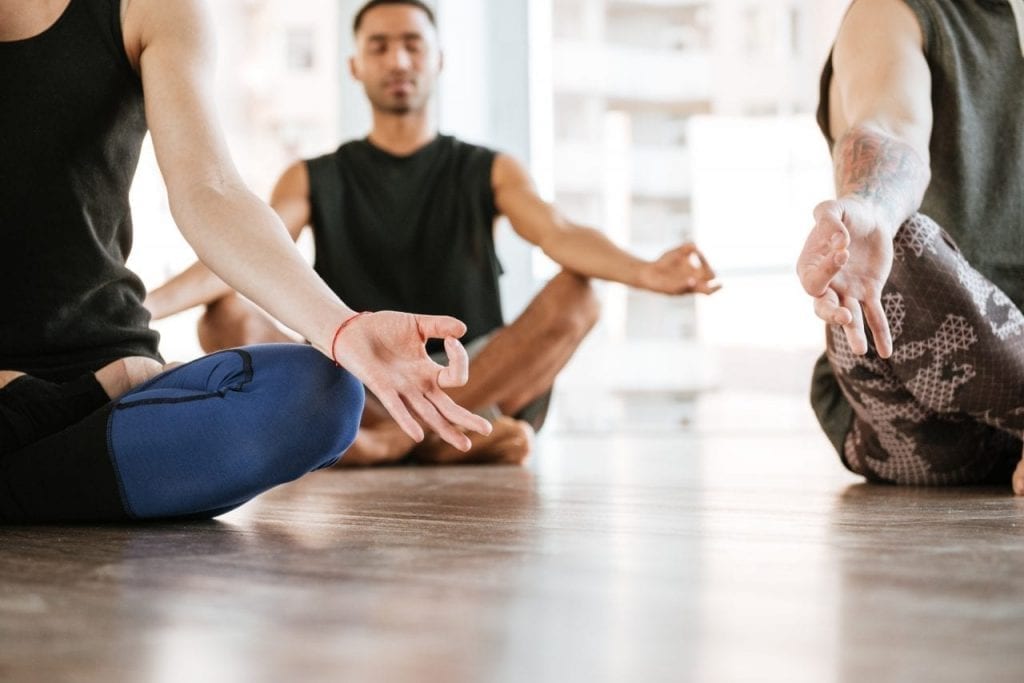The journey of yoga from the Eastern World to the Western World has been a transition from grudging disbelief to a resurgent faith, and over the past several years, there has been an upsurge in its popularity.

Medical professionals, celebrities, fitness instructors, and common men alike, have started practicing this age-old practice recognizing its myriad benefits.
Yoga has always been shrouded with a mysticism that connects the mind, body, and spirit. But today, it has opened up to the world with the bouquet of opportunities.
B.K.S. Iyengar, the World-renowned yoga teacher had said,
“Yoga teaches us to cure what need not be endured and endure what cannot be cured”.
So if you're thinking of entering into the world of yoga you've come to the right place. Here we will give you a list of the scientifically proven benefits that this practice can provide to your body. Continue reading and you will find out..
The Different Yoga Forms

Before knowing the benefits, it is good to know the different types of yoga you can practice. There are several different forms of yoga ranging from fast-paced and intense, to gentle and relaxing. These are some example of the different yoga forms:
- Hatha: Hatha is the form that is commonly associated with yoga. This form combines a series of basic movements with breathing.
- Vinyasa: Vinyasa yoga is a series of poses that flow in a smooth pattern from one to another
- Power: Power yoga is a faster, higher-intensity practice that builds your muscles and gives you strength
- Ashtanga: Ashtanga yoga comprises yoga practices associated with a special breathing technique.
- Bikram: Bikram yoga is also known as the “hot yoga” and represents a series of 26 challenging poses that are performed in a room that has a high temperature.
- Iyengar: Iyengar yoga forms need props like blocks, straps, and chairs. These help you move your body into the right alignment.
This article will let you discover the various benefits that you can achieve by incorporating the practice of yoga in your daily life.
Physiological Benefits of Practising Yoga

1. Reduces Blood Pressure:
Practicing yoga decreases blood pressure by improving the circulation and oxygenation of the body.
People who have high blood pressure when started practicing yoga three times a week, along with breathing and relaxation exercises, saw a considerable decrease in both systolic and diastolic blood pressure (1, 2).
2. Lowers Pulse Rate
Yoga lowers your pulse rate. This is indicative of the heart getting stronger enough to pump more and more blood with fewer beats. The nature of asanas practiced in yoga is related to moving the body through different postures.
This causes the body to become stronger and flexible. Since the heart is also a muscle, yoga practices lead to a stronger heart. As the heart condition improves, so does its efficiency.
Increased efficiency enables the heart to pump a greater volume of blood with each heartbeat which means fewer heartbeat is needed per minute. This lowers resting heart rate leading to a healthy heart (3).
3. Improves Blood Circulation
Practicing yoga improves blood circulation in the body. This ensures the transporting of nutrients and oxygen throughout the body. Relaxation postures help circulation, movement brings more oxygen to the cells, twisting brings oxygenated blood to the organs and inversions reverse the blood flow.
The downward-Facing-Dog pose is considered great for circulation to name one. Improved blood circulation gives you healthier organs, healthy skin, and a good brain (4, 5).
4. Increases Cardiovascular Endurance
Yoga improves cardiovascular endurance through twin benefits. It lowers the heart rate as well as improves oxygenation to the body.
Yoga postures and breathing techniques help improve cardiovascular endurance. Tadasana (mountain pose), Sukhasana (easy pose), Uttanasana ( standing forward bend) are few of them. (6, 7).
5. Promotes Gastrointestinal Functions
Practicing yoga has been shown to aid in digestion, elimination, and bloating. This is because of the increase in circulation and energy to these areas as you start with your yoga.
The various asanas that are practiced during yoga practice work on a physical level by stimulating the internal organs. It stimulates the Parasympathetic nerves (SNP) which help us rest and digest. Peacock Pose (Mayurasana), Seated Forward Fold (Paschimottasana), Half Lord of the Fishes ( Ardha Matsyendrasana) are some of them. (8, 9).
6. Drains Your Lymph And Boosts Immunity
In yoga, the supported and inverted poses increase circulation in the lymph. It is a clear watery fluid that flows through the body and picks up viruses and bacteria and takes them to the lymph nodes. There they are filtered.
It is important to know that unlike blood, which flows as the result of the pumping of the heart, lymph flows by muscular contractions. Physical exercise like yoga is the key to the lymph flowing.The movement is also affected by gravity. So, any asanas where the head is below your heart like in Uttanasana (Standing Forward Bend) and Salamba Sarvangasana (Supported Shoulder Stand), allows the lymph to move into your respiratory organs, where often germs enter. When you return back to your upright position, gravity drains the lymph and sends it through your lymph nodes for cleansing (10, 11).
7. Keeps your Heart Healthy and Stimulates the Kidneys
Yoga practice leads to an increase in the circulation of blood flow around your body improving the oxygen level in the blood.
This, as a result, increases the blood flow to the vital organs. The oxygenated blood delivered to all the organs like the heart, lungs, and the brain keeps them stimulated and nourished. Happy organs work better. Special yoga movements that include spinal twists directly stimulate the kidneys ensuring their optimum health (12, 13).
8. Detoxifies The Liver
The largest gland in your body is the liver and it is used for detoxification. This organ purifies the blood and makes sure that the toxins do not recirculate the bloodstream.
Various yoga movements have shown to help in that. Forward folding, in yoga practice, gives the liver a gentle massage. The posture helps stimulate the blood flow. This helps in the outflow of old, stagnant blood with the inflow of fresh, well-oxygenated blood that keeps the organ healthy (14, 15).
9. Helps the Reproductive Organs
Yoga assists in improving the health of your reproductive organs. This assists infertility. Yoga practices enhance the self-regulation of hormonal imbalances in the body. It also increases the stimulation and circulation of blood to both the female and male reproductive organs (16).
10. Boosts Metabolism
metabolism is a chemical process that creates energy inside your body and is regulated by your endocrine system, mostly thyroid. Yoga practices have shown to have a powerful stimulating and strengthening effect on these glands. That way, yoga boosts metabolism and helps burn more calories.Postures in yoga which include twisting and compressing, massage the endocrine and abdominal organs, regulating their function, improving local circulation, and cleansing them of old stagnant toxins.
Practicing Sun Salutations has been known to be helpful in boosting metabolism. Along with physical postures, breath techniques also help warm and energize the body, which further boosts metabolism. They are Kapalabhati Pranayama (breath of fire) and Ujjayi Pranayama ( Ocean sounding breath) (17, 18).
11. Alleviates Pain
Yoga alleviates pain by building strength, improving flexibility, strengthening joints and bones, and releasing muscle tension. Yoga works on strengthening and stretching and these are the keys to long term healing.Yoga benefits are not limited only to their therapeutic effect but also benefits the mental and physical levels. The slow, deep, and gentle stretches practiced in yoga bring every part of the body into balance. It directs the mind to focus on something positive and not pain.
Iyengar yoga is often believed to be good for back pain and neck pain. There are other forms of yoga that are practiced for other pains and yoga experts can guide you properly towards it (19, 20).
12. Improves Respiratory Functions
The most fundamental point of yoga is the correction of your breathing procedure. The practice of asanas implies permanent control of breathing and a substantial improvement in the oxygenation of the organisms.
The techniques that pranayama presents practice breathing techniques more. Yoga also teaches you deep breath at a slower pace which balances the nervous system, slows down your heart rate, and completely relaxes your muscles.Yoga involves control of your rate of respiration and retention periods that produce marked changes in the metabolic activities resulting in a reduction in oxygen consumption.
Asanas, when combined with proper breathing, improve the circulation of blood, which positively impacts the brain, vital organs, and the extremities (21, 22).
13. Balances The Nervous System
Practicing yoga stimulates relaxation, it slows down your breathing and balances the autonomic nervous system, which consists of the sympathetic nervous system (SNS) and parasympathetic nervous system (SNP).SNP that is responsible for relaxation, is activated by yoga that considerably reduces heart rate and blood pressure. It also facilitates faster recovery from a stressful situation (23).
Manifested Benefits of Practising Yoga

21. Improves Memory
Yoga practices improve blood circulation to the brain that helps improve focus resulting in better memory (31). Also, the reduction of stress improves memory. Yoga asanas like Sarvangasana and Bhujangasana are known to boost memory power by increasing blood supply to the brain. Padahastana has shown to sharpen memory skills and Halasana positively affects overall brain function (32).
22. Attention
Yoga teaches you to be focussed and extremely attentive. The attention that is required in yoga to maintain the structured breathing in conjunction with yoga poses sharpens this ability (33).
23. Mind-Body Connection
Yoga teaches the body to connect with the mind. As you start controlling your breathing and match it with the movements of your body, you gain the ability to retrain your mind to find calm and peace (34). Yogis, with a lot of practice, have gained knowledge about this.
24. Improves Self-Acceptance
Yoga teaches you to focus inwards and realize that perfection is not the goal. This leads to self-acceptance.
25. Relieves Anxiety
Meditation, visualization, and focusing on the way you are breathing that are practiced in yoga, can help you let go of fear and worry. The practice of yoga elicits the relaxation process that allows both the mind and body to gain a sense of calmness (35).
26. Reduces Stress
As we are aware, stress is closely linked to several health problems. This is mostly related to cortisol that is a hormone related to it. Yoga directly influences this hormone and reduces its level, thereby reducing stress. This phenomenon increases our resistance to diseases and infections (36).
A very interesting fact about yoga that has been documented in numerous studies is that, when combining dynamic postures with relaxation, it is a better tool to combat stress than the relaxation exercise not accompanied by any dynamic practices.
This maintains a balance in the nervous system.
27. Improves Mood
Yoga practices have shown to improve mood. Creating a strong mind-body connection, with a healthy body and inward focusing leads to a healthy body and an elevation of mood.
28. Reduces Depression
It is believed by some that the negative thoughts and feelings that you repress within you can be brought to the surface by practicing certain types of yoga.
When this happens, the negative energy is free to flow out or released and not stuck within you. The regular practice of yoga ensures regular release of this negativity leading to a reduction in depression (37).
29. Promotes Good Sleep
Yoga has been known to relax the body as well as the mind. It also considerably improves breathing and reduces stress. This results in restful and better sleep.
Some of the yoga poses are Viparita Karani ( Legs-Up-the-Wall Pose), Setu Bandha Sarvangasana ( Restorative Bridge Pose), Supta Baddha Konasana ( Reclining Bound Angle Pose) and so on.
Studies have shown that yoga benefits in all sorts of situations which may cause trouble sleeping. Yoga improves sleep in old people, yoga also improves sleep in pregnant women (38).
30. Helps Manage Self-control
The controlled movement that yoga teaches you translates into the increased ability to self-control in your life.
31. Brings On Positivity
Continued yoga practice balances hormones in your body and also the nervous system that brings about a more stable, positive approach to life.
32. Reduces Hostility
Yogis report a huge reduction in the hostility that they felt earlier. Yoga also teaches you the sense of control when the anger flares or there is a trigger. Yoga also promotes relaxation and calming of the nervous system with meditation. Less hostility lowers your blood pressure and stress and teaches you to have a healthier approach towards life (39).
Yoga Practices for Mental Predisposition

21. Improves Memory
Yoga practices improve blood circulation to the brain that helps improve focus resulting in better memory (31). Also, the reduction of stress improves memory. Yoga asanas like Sarvangasana and Bhujangasana are known to boost memory power by increasing blood supply to the brain. Padahastana has shown to sharpen memory skills and Halasana positively affects overall brain function (32).
22. Attention
Yoga teaches you to be focussed and extremely attentive. The attention that is required in yoga to maintain the structured breathing in conjunction with yoga poses sharpens this ability (33).
23. Mind-Body Connection
Yoga teaches the body to connect with the mind. As you start controlling your breathing and match it with the movements of your body, you gain the ability to retrain your mind to find calm and peace (34). Yogis, with a lot of practice, have gained knowledge about this.
24. Improves Self-Acceptance
Yoga teaches you to focus inwards and realize that perfection is not the goal. This leads to self-acceptance.
25. Relieves Anxiety
Meditation, visualization, and focusing on the way you are breathing that are practiced in yoga, can help you let go of fear and worry. The practice of yoga elicits the relaxation process that allows both the mind and body to gain a sense of calmness (35).
26. Reduces Stress
As we are aware, stress is closely linked to several health problems. This is mostly related to cortisol that is a hormone related to it. Yoga directly influences this hormone and reduces its level, thereby reducing stress. This phenomenon increases our resistance to diseases and infections (36).
A very interesting fact about yoga that has been documented in numerous studies is that, when combining dynamic postures with relaxation, it is a better tool to combat stress than the relaxation exercise not accompanied by any dynamic practices.
This maintains a balance in the nervous system.
27. Improves Mood
Yoga practices have shown to improve mood. Creating a strong mind-body connection, with a healthy body and inward focusing leads to a healthy body and an elevation of mood.
28. Reduces Depression
It is believed by some that the negative thoughts and feelings that you repress within you can be brought to the surface by practicing certain types of yoga.
When this happens, the negative energy is free to flow out or released and not stuck within you. The regular practice of yoga ensures regular release of this negativity leading to a reduction in depression (37).
29. Promotes Good Sleep
Yoga has been known to relax the body as well as the mind. It also considerably improves breathing and reduces stress. This results in restful and better sleep.
Some of the yoga poses are Viparita Karani ( Legs-Up-the-Wall Pose), Setu Bandha Sarvangasana ( Restorative Bridge Pose), Supta Baddha Konasana ( Reclining Bound Angle Pose) and so on.
Studies have shown that yoga benefits in all sorts of situations which may cause trouble sleeping. Yoga improves sleep in old people, yoga also improves sleep in pregnant women (38).
30. Helps Manage Self-control: The controlled movement that yoga teaches you translates into the increased ability to self-control in your life.
31. Brings On Positivity: Continued yoga practice balances hormones in your body and also the nervous system that brings about a more stable, positive approach to life.
32. Reduces Hostility: Yogis report a huge reduction in the hostility that they felt earlier. Yoga also teaches you the sense of control when the anger flares or there is a trigger. Yoga also promotes relaxation and calming of the nervous system with meditation. Less hostility lowers your blood pressure and stress and teaches you to have a healthier approach towards life (39).
Yoga Practices To Help Balance The Chemical Changes Occurring In The Body

Several aspects of the chemical changes that occur in our body, yoga plays a crucial function in maintaining the level of triglycerides, total cholesterol, glucose level, electrolyte balance like sodium level in the blood, the red blood cells, and the vitamin C.
33. Increases Red Blood Cells
Red Blood Cells (RBC) are responsible for carrying oxygen through the blood. A decrease in the RBC count results in low energy and anemia. Yoga practices have been known to increase the level of RBC in the body (40).
34. Decreases Triglycerides
The chemical form of fat is triglyceride. Its elevated level can be indicative of heart disease and high blood pressure. Yoga practices have shown to lower these triglyceride levels (41).
35. Boosts Vitamin C Levels in the Body:
This is a vitamin that boosts immunity. It also produces collagen and is a powerful antioxidant and yoga practice seems to increase the vitamin C levels in your body. The main reason behind this is the decrease in the oxidative stress in the body and less utilization of the anti-oxidant (42).
36. Balances Sodium
Regular yoga practice helps reduce sodium content in the blood that is similar to any other good exercise program. The consumption of highly processed food in recent days has increased the sodium level to a level where the delicate balance of electrolytes like sodium, potassium, and chloride has been disturbed. Yoga helps retain this balance (43).
37. Lowers Glucose
Similar to the other physical activities, yoga increases glucose uptake by the muscular cells. This helps lower blood sugar levels, improve the overall circulation, and reduce the risk of heart diseases (44).
38. Reduces Cholesterol
Studies have confirmed that practicing yoga can directly affect the cholesterol level. In the Indian Heart Journal, researchers reported that a three- month yoga program can reduce the total cholesterol as well as the LDL cholesterol, which are bad for the body. They can build up in your arteries blocking them (45).
Yoga also increases the level of good cholesterol in the body, the HDL cholesterol (46). These are the healthy variety that removes the extra cholesterol from your arteries and takes it to the liver where it is broken and passed out of the body as a waste product.
Yoga Practices To Reap The Exercise Related Benefits

39. Builds On Your Muscle Strength
A defined musculature in addition to improving physical appearance also protects bones, prevents injuries, and prevents diseases like arthritis. Yoga improves coordination in older people which results in a marked decrease in their fall. Yoga strengthens muscles by preventing lactic acid from building up in the body, which is the main cause of fatigue and pain. It also retains your flexibility ( 47, 48).
40. Strengthens Your Muscle Tone
Yoga asanas play a dual role. Some of them make use of your body weight to tone your muscles while the other poses help you strengthen your muscles (49).
In fact, yoga is so effective in strengthening muscles that a study that was done by the American Council on Exercise in 2005, revealed that even beginners after practicing Hatha Yoga for 8 weeks could do push-ups and sit-ups more efficiently than others (48).
This was due to increased muscle mass compared to people who didn’t work out before. With regular practice, the body becomes more sculpted and muscles more defined.
41. Improves Bone Health
Yoga practices have been shown to help strengthen bones and slow down the loss of bone mass. Practicing yoga also affects in a positive way the health of the spine, by obtaining the discs that separate the vertebrae with the necessary nutrients (50).
42. Prevents Cartilage And Joint Rupture
Joint is the place where your bones meet. It can be two or more bones, tendons, ligaments, cartilage, and the fluid that lubricates the area. They are extremely crucial for free movement of the body. They are often categorized as slightly moveable or freely moveable. Practicing yoga increases your range of motion, strengthens the muscles that support those joints, and increases bone strength (51). Yoga keeps the health of the cartilage and ensures proper circulation of the fluids, which protects the cartilages and bones from rupture.
43. Improves Breathing
Yoga teaches you to breathe in a natural and controlled way during ita practice. This particular type provides more oxygen-rich air for your body. It also gives you more energy that leads to less fatigue (52).
44. Increases Eye-Hand Coordination
Eye-hand coordination is very important especially in sports like tracking and catching a ball or knocking a puck out of the air. It is needed in many aspects including driving a car. As you improve this through yoga practice, it benefits you in your everyday life.
45. Improves Dexterity
Yoga strengthens the mind-body connection and improves flexibility. This, in turn, leads to a more dexterous body and improved skill (53).
46. Increases Depth perception
The awareness of the body and its varied movement is done by yoga. Regular practice improves it and gives you increased depth perception. It is the visual ability to be able to perceive the world in three dimensions in addition to the distance of an object (54).
47. Promotes Endurance
By increasing your stamina on a physical, physiological, and mental level, yoga improves your endurance (55). One major element of endurance is a better utilization of oxygen. Your body relies on this oxygen for producing energy at the time of exercising. Therefore, a person with good endurance has a better capacity to provide oxygen to the working muscles that need oxygen. That is why you will see that an unfit person fatigues much sooner than someone who is physically in better shape.
48. Reduces Reaction Time (Rt)
Reaction time is the ability to respond quickly to a stimulus. A reduced reaction time means that you are able to respond much faster to the stimulus.
Yoga training helps improve your reaction time. You react faster to a stimulus that ensures quicker and stronger response.
Studies have reported that there has been a significant decrease in visual and auditory reaction time after 6 weeks of yoga practice (56).
49. Manage The Subcortex And Helps Relax
The subcortex in the brain is associated with well being. It affects the behaviors as diverse as rage, sex, temperature control, hormone release, eating and drinking, waking, and emotion. Yoga has the power to dominate the subcortex and relaxes your mind and keeps these emotions balanced (57).
50. Stimulates The Parasympathetic Nervous System
The sympathetic nervous system often referred to as fight or flight response, is the one that prepares your body for intense physical activity. The parasympathetic nervous system does exactly the opposite thing by relaxing the body and slowing high energy functions.
Practicing yoga stimulates this parasympathetic nervous system thereby lowering blood pressure and slows the pace of your breathing, helping you to relax and heal (58,59).
51. Balance Workout of Opposing Muscles
As has been stated earlier, balance is the key to all yoga poses. Yoga ensures that If certain muscles are worked in one direction, it will also be worked in the opposite direction which maintains balance.
52. Improve Joint Range of Motion
The joint range of Motion is a measurement of the direction and distance a joint can move to its full potential. Yoga practices have shown to have a marked improvement on this.
A study that was conducted in the University of Pennsylvania School of Medicine, stated the same (60).
Yoga Practices for Prevention of Diseases

53. Alzheimer’s
Alzheimer’s is a progressive disease that destroys important mental functions like memory. The brain cells and the brain cell connections degenerate and die.
Recent research suggests that yoga and meditation play a pivotal role in the prevention and improving symptoms of this progressive disease (61).
54. Type 2 Diabetes
Yoga practices that help to reduce the blood glucose level and management of Type 2 diabetes mellitus are practices such as cleansing processes, asanas, pranayama, bandha, meditation, mudras, mindfulness, and relaxation (62).
55. Osteoporosis
Osteoporosis is a condition in which the bones become brittle and weak. In this disease, the body loses too much bone making it very brittle. The bones become less dense and predisposed to fractures.
Yoga can be beneficial to osteoporosis (63). A small study that was conducted in 2009 found that yoga could increase bone density if practiced consistently (64).
56. Heart Disease
The factors that lead to heart diseases are high blood pressure, high cholesterol, low HDL cholesterol, high blood glucose level, and stress. Deep breathing and mind-calming meditations calm the nervous system and ease stress. Yoga lowers blood pressure, bad cholesterol, blood glucose levels ensuring better heart health (65).
Yoga Practices for Alleviation or Reduction of Symptom

57. Arthritis
People with different types of arthritis who are in the habit of practicing yoga have reported reduced joint pain, improved joint flexibility, and function. Many people, in fact, return to yoga as a way to exercise gently and improve joint flexibility (66).
Yin yoga is a very good option for reducing chronic arthritis. It does so by reducing tension, and anxiety in the body. This is a type of yoga, that focuses on matching breath to movement during a flowing sequence of poses (67).
58. Asthma
Even though yoga does not claim to cure asthma, yoga practices can definitely control asthma symptoms, in accordance with several studies. Yoga helps asthmatic people by reducing stress, which has been known to be a common asthma trigger and helps them control breathing (68).
Savasana, Sukasana, Forward Bend, Seated Spiral Twist, Side Bend, Cobra Pose are some asanas that help relieve asthma.
59. Multiple Sclerosis
Multiple sclerosis is a disease where your own immune system eats away the protective covering of the nerves. It can cause several symptoms like vision loss, impaired coordination, fatigue, and pain.
According to experts, yoga has the potential to alleviate several physical symptoms that are related to Multiple Sclerosis (69). It can contribute to flexibility, strength, balance, posture, focus, circulation, digestion, elimination, and pelvic floor health. It decreases tension, fatigue, and spasticity.
60. Carpal Tunnel syndrome
Carpal Tunnel Syndrome, also known as the median nerve compression, is defined by numbness and tingling in the hand and arm that is caused by a pinched nerve in the wrist.
It is said that practicing yoga can be helpful because stretching can relieve compression in the carpal tunnel (70). A better joint posture has the capability to decrease intermittent compression and blood flow may be improved. This may decrease ischemic effects on the median nerve.
61. Muscular Dystrophy
Muscular dystrophy is a group of genetic diseases that cause progressive weakness and loss of muscle mass (71). Exercises like Pilates, Tai chi, and yoga, which incorporate stretching, have been shown to be improving muscle tone and help with joint stiffness.
62. Scoliosis
Scoliosis is a condition with a sideways curvature of the spine. This normally occurs more often during the growth spurt right before puberty. The entire skeletal system like the spine, ribs, and pelvis are affected. It also impacts the nervous system, affects the body’s hormonal and digestive systems (72).
A single yoga poses each day can markedly improve the spine curvature in these people (73). A recent study has observed that performing a single yoga pose for 90 seconds for at least 3 days a week can remarkably reduce the spine curvature within 3 months.
63. Chronic Bronchitis
Yoga practice teaches you controlled breathing which can ease anxiety, help achieve relaxation, and ensures more oxygen to the bloodstream.
These breathing exercises help open blocked airways that are caused by bronchitis and other symptoms which are directly linked to COPD ( Chronic obstructive pulmonary disease) and improve air circulation. Studies have confirmed that short term yoga training is well tolerated and brings favorable changes in these patients (74).
64. Obsessive-Compulsive Disorder (OCD)
Yoga practices can help manage people suffering from OCD. It has been found that a combination of yoga, pranayama, and chanting goes a long way to manage OCD symptoms.
A recent study published in the International Journal by the Dev Sanskriti University in Haridwar, India observed that 20 minutes of yoga, 10 minutes of pranayama, and 10 minutes of chanting Gayatri mantra could reduce the symptoms just after 45 sessions. These patients also had herbal medicines (75).
65. Menopause
Restorative and supportive poses of yoga have the ability to ameliorate the unwanted side effects of menopause, which includes hot flashes and more. They include Supta Virasana ( Reclining Hero Pose), Supta Baddha Konasana ( Reclining Bound Angle Pose), and Janu Sirsasana ( head-to-knee pose). The hormonal fluctuations which are common at this point of time also can be lowered with yoga (76).
66. Back Pain
Apart from the above-mentioned benefits of practicing yoga, there are other conditions that also get relief from yoga. People with back pain, those who are prone to allergies, and those who are suffering from Obsessive- Compulsive- Disorder have been benefited by yoga practices (77).
67. For Menstruation
While you go through your periods, the body undergoes several changes. The surge of hormones affects your emotional state as well as your physical state. It makes you feel weaker, more irascible. It is recommended not to practice yoga for the first three days of menstruation (78). There are specific yoga poses that relieve the pain of menstruation and help you relax as well. Some of them are balasana (position of the child), half-bridge, and paschimottanasana.
68. Cancer
Practicing yoga can be proved to be therapeutic and can complement cancer treatment. It can help heal the body, mind, and spirit and give the power to fight the cancer battle. Several studies have confirmed that yoga can reduce fatigue and improve the strength and range of motions for cancer patients (79).
Breathing exercise and meditation, that is practiced in yoga, can reduce stress, promotes healing, and in some ways improve the quality of life amongst cancer patients.
Stress exacerbates tumor growth in cancer. Yoga incurs a healthy sense of acceptance that helps cancer patients to adapt to the situation. It also helps in the reduction of side effects related to cancer such as pain, tiredness, sleep problems, and depression.
69. Migraine
Migraines are repetitive headaches that are of different intensity and are often accompanied by sensitivity to light and sound. Triggers can be stress, certain drinks, and food or some hormonal changes in the body.
The prevalence of migraine is high. Roughly 1 out of every 7 Americans each year suffer from this.
However, several studies have now shown that yoga could be a useful associate in reducing the frequency of migraines. Specific yoga poses can very well target the stress and tension that are contributing to migraine (80). Those poses help boost the circulation of the blood. The improved blood flow to your brain can reduce the pain and throbbing during a migraine.
70. Epilepsy
The cause of epilepsy can be due to damage to the brain. It can be a head injury, stroke, or brain tumor. It may also develop suddenly without a reason at all. In a few cases, it’s been seen that the fits are triggered by stress, anxiety, and depression.
Yoga can be an appealing therapeutic option for people suffering from epilepsy (81). Studies have now confirmed that yoga practice lowered the seizure frequency, gives you a surge of energy, and reduces the incidence of seizure worry and stress that is perceived.
71. Sciatica
It refers to the pain that exudes along the path of the sciatic nerve. It starts in your spine and then radiates down the leg.
Yoga practices can alleviate the pain with specific yoga poses (82).
To name a few are Bharadvaja’s Twist, Bound angle pose, Eagle Pose, Dolphin Pose, and Extended Angle pose. A proper yoga guru or expert can guide you properly.
72. Constipation
In yoga, there are postures that can manipulate a person’s digestive tract and can help relieve constipation. It encourages the digestive tract to pass gas or stool (83).
The poses that have been proved to be excellent in this regard are Half Spinal Twist, Supine Spinal Twist, Cobra pose, Wind Relieving Pose, and Legs Up the Wall Pose to name a few (84).
The Final Note
Studies, research, belief, and experiences have affirmed the benefits of yoga affect you not only physically but in every way that is possible. It helps manage the stress that has a devastating effect on your body and mind. Yoga has been proved to be extremely effective in developing coping skills and helping you incline to a more positive outlook on life.
Incorporating yoga in your daily life will improve your physical and mental well being and help you achieve enrichment of mind and soul.
Contents








